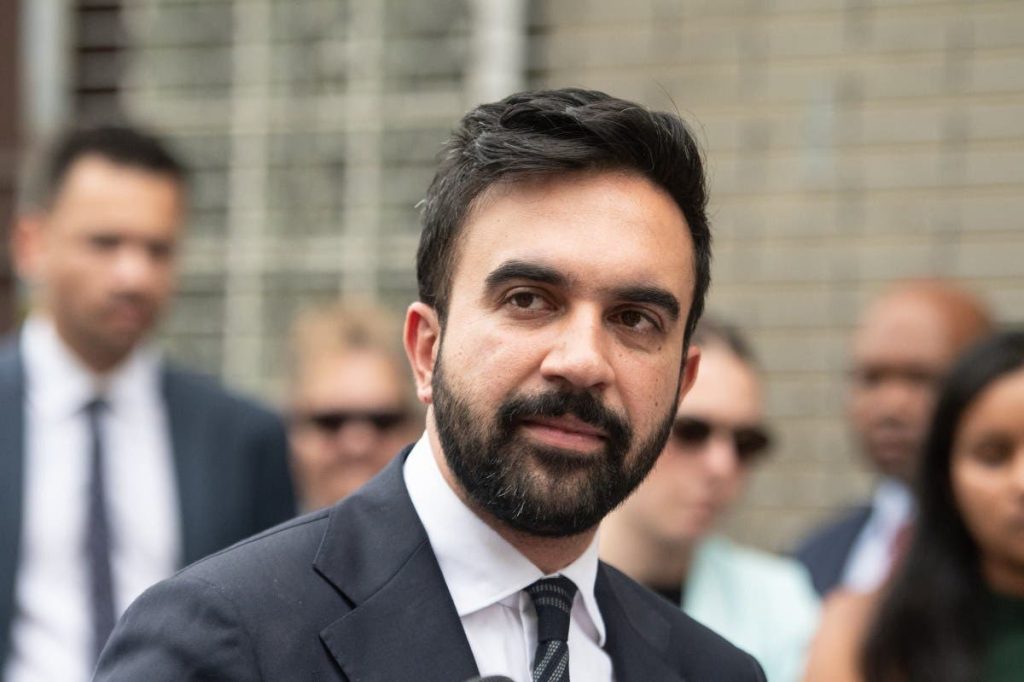Mamdani Surges Ahead in NYC Mayoral Race as Election Day Approaches
In a surprising turn of events that could reshape New York City’s political landscape, Democratic nominee Zohran Mamdani has established a commanding 20-point lead over former Governor Andrew Cuomo in the mayoral race, according to a new Suffolk University poll. With the November 4 election fast approaching, Mamdani—a Democratic socialist and State Assemblyman making his first citywide run—appears to be capitalizing on his unexpected primary victory and building momentum that has caught many political observers off guard. The poll shows Mamdani with 45 percent support among likely voters, while Cuomo trails at 25 percent, Republican Curtis Sliwa at 9 percent, and incumbent Mayor Eric Adams at just 8 percent. This substantial lead mirrors findings from other recent surveys, including a Quinnipiac University Poll that reflected nearly identical numbers, suggesting the lead is neither an outlier nor a statistical anomaly.
The emergence of Mamdani as the frontrunner represents a potential seismic shift in New York City politics. His democratic socialist platform and grassroots campaign have evidently resonated with voters who seem ready for change after the tumultuous tenure of Mayor Adams and following years of establishment leadership. The Suffolk University CityView poll, which surveyed 500 likely voters between September 16-18 with a margin of error of 4.4 percent, identified affordability as the top concern for New Yorkers at 21 percent, followed closely by crime at 20 percent, economic issues at 14 percent, and housing at 9 percent. These priorities align well with Mamdani’s campaign messaging, which has emphasized economic inequality and housing affordability. Market-based prediction platforms have taken notice as well, with Polymarket now estimating Mamdani’s chances of winning at an impressive 88 percent—a remarkable position for a candidate who began as a longshot progressive challenger.
Despite Mamdani’s substantial lead, political analysts caution that the race remains fluid and could tighten under certain circumstances. When polling removes major rivals from hypothetical matchups, Mamdani’s advantage narrows considerably, particularly against Cuomo. This suggests that if the field consolidates, anti-Mamdani voters might coalesce around a single alternative candidate. Columbia University professor Robert Y. Shapiro noted in comments to Newsweek that “Mamdani has a solid lead and Cuomo has only two hopes. One is that Mamdani will perform badly in the debates in October—something close to a disaster. The other is that barring a poor performance by Cuomo in the debates, he will have a chance of winning if both Sliwa and Adams drop out.” This analysis highlights the importance of the upcoming debates and the potential impact of candidate withdrawals on the race’s dynamic.
The mayoral contest has taken on additional significance against the backdrop of national politics and New York City’s numerous challenges. The victor will need to navigate a complex relationship with the federal government, particularly if former President Donald Trump returns to the White House, while addressing persistent local issues like rising housing costs, public safety concerns, and economic recovery. Mamdani’s potential victory would mark a decisive leftward shift for America’s largest city at a time when progressive governance models are being closely scrutinized nationwide. His campaign has succeeded in building a diverse coalition of supporters, though he has yet to secure endorsements from some key Democratic leaders, including U.S. House Minority Leader Hakeem Jeffries and Senate Minority Leader Chuck Schumer—notable absences that reflect ongoing tensions within the Democratic Party between its progressive and moderate wings.
New York Governor Kathy Hochul has thrown her support behind Mamdani, providing him with important establishment credibility while allowing him to maintain his progressive identity. This balancing act—appealing to both the party’s base and its traditional power centers—may prove crucial to his continued success. The remaining weeks of the campaign will likely feature intensified efforts by Cuomo to close the gap, potentially through aggressive debate performances and attempts to consolidate the anti-Mamdani vote. For Adams and Sliwa, both polling in single digits, the path forward appears increasingly narrow, raising questions about whether either might step aside to improve the chances of stopping Mamdani—a scenario that could dramatically alter the race’s trajectory.
As November 4 approaches, all eyes will be on the scheduled debates, which represent both opportunity and risk for the frontrunner. Mamdani’s performance in these high-profile encounters could either cement his lead or provide an opening for his opponents. The coming weeks will also reveal whether major political figures and organizations that have remained on the sidelines will finally make endorsements that could impact voter perceptions. What remains clear is that New York City stands at a potential inflection point, with voters seemingly prepared to embrace a progressive vision that challenges conventional political wisdom about electability and governance in America’s largest metropolis. Whether Mamdani can maintain his advantage and translate polling strength into electoral victory will soon be answered, with implications that extend far beyond the five boroughs to the national political conversation about the direction of the Democratic Party and urban governance in the 21st century.


